Skin Graft after Skin Cancer Surgery
Skin cancer is one of the most common type of cancer and can be caused by long-term exposure to the sun’s ultraviolet rays. The severity of skin cancer can range from very small lesions that can be treated with non-invasive methods to large tumours that can spread in different parts of the body and require the administration of chemotherapeutic drugs and undergoing extensive surgery. For more advanced skin cancers that need surgical excision, there can be a significant impact on your appearance especially if the procedure was performed on the facial area. While the damage caused by skin cancer and surgical removal can never be completely undone, the affected area can be reconstructed with the use of a skin graft to restore facial form and function.
Dr Mark Gittos is a specialist plastic surgeon based in Auckland with other clinics around New Zealand and UK. With years of experience, Dr Gittos can perform skin graft after cancer procedures to help you get the aesthetic appearance you want.
Types of Skin Cancer
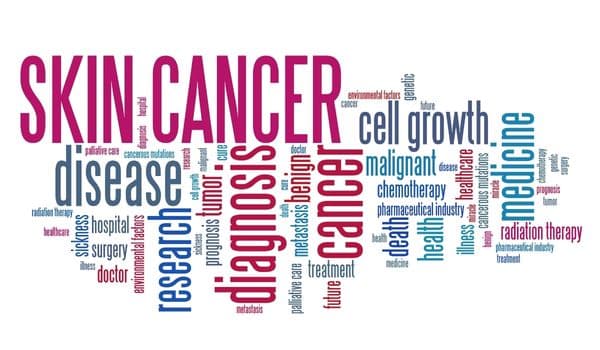
There are three types of skin cancer:
- Basal cell carcinoma (BCC): this is the most common type of skin cancer and is characterised by a pearly or waxy bump. BCC can also appear as a pinkish patch of skin. Risk factors for BCC include having fair skin and chronic exposure to the sun or indoor tanning. They can occur anywhere on your body and may affect the nerves and bones, leading to damage
- Squamous cell carcinoma (SCC): this skin cancer appears as a red firm bump, scaly patch, or a non-healing sore. Risk factors for SCC include darker skin and chronic exposure to the sun or indoor tanning. They can also occur anywhere on your body but are commonly found in sun-exposed areas. SCC can grow deep into your skin and cause damage
- Melanoma: this type of skin cancer is the most serious because it can grow extremely quickly. In just 6 weeks, it can be life-threatening. Melanoma has the following characteristics: asymmetrical or not uniform, irregular borders or shape, more than one colour or shade, a painful lesion that itches or burns and often changes in size, shape, or colour. Early diagnosis and treatment are crucial if you have melanoma
Surgery for Skin Cancers
Surgery is usually performed for skin cancers to lower the risk of spreading. This is sometimes followed by other treatments such as radiation or chemotherapy to improve the survival rate of affected individuals. Your surgeon may perform one of the following procedures if you have skin cancer:
- Excision: excision surgery for skin cancer involves using a local anaesthetic to numb the target area and then cutting out the affected skin along with some surrounding normal skin using a surgical knife. The remaining skin is then carefully closed using sutures
- Curettage and electrodessication: during this procedure, your surgeon will remove the skin cancer by scraping it with a curette (a long, thin instrument with a sharp looped edge on one end). The affected skin is then treated with an electric needle known as an electrode. This process is usually repeated to destroy any remaining cancer cells
- Mohs surgery (Mohs micrographic surgery or MMS): this procedure is usually performed by a surgeon with special training. During Mohs surgery, your surgeon will remove the tumour along with a thin layer of normal skin and then checks the tissue sample under a microscope. If cancer cells are present in the tissue sample, another layer is removed and examined until the skin samples do not contain cancer cells
- Lymph node surgery: the procedure involves the removal of lymph nodes (small bean-shaped clusters of cells) and then checking them under a microscope to look for signs of cancer. This surgery is more extensive than other skin cancer procedures and is usually performed using general anaesthesia
During the consultation, Dr Gittos will provide detailed information about the surgery as well as skin cancer scars pictures and skin cancer surgery photos for you to gain an understanding.
Skin Grafting and Reconstructive Surgery
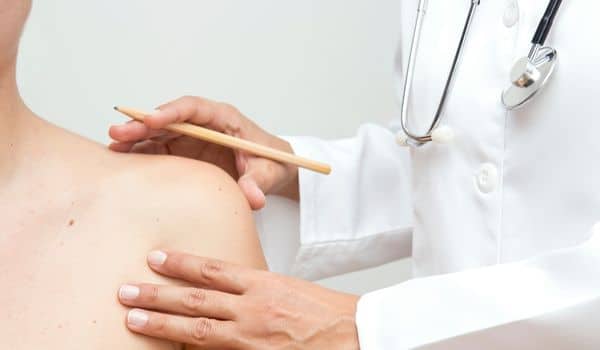
Wound healing is a complicated process. In general, it may take up to a year for the surgical scars to mature completely. Even after the wounds have healed after surgery for skin cancer, the scars may look unpleasant and may affect your quality of life. Fortunately, skin grafting and reconstructive surgery can help improve the appearance and function of the affected area.
If a large portion of cancerous skin is removed during surgery (sometimes a thin layer of normal skin is removed along with cancerous skin), your surgeon will repair the area using a skin graft or skin flap. This process involves using skin from another part of your body (e.g. thigh or groin) to reconstruct the surgical opening.
Dr Gittos will first place an expander under the skin where the flap will be to allow the growth of additional skin. The damaged area will be then covered with the skin graft and will be held in place using stitches, staples, or special glue. Within a few days, the transplanted skin will begin to develop blood vessels and its own blood supply. The transplanted skin will then connect to the skin around it. For best results, your surgeon may perform additional cosmetic procedures.
Three Stages of Skin Graft Healing
The following are the three stages of skin graft healing:
- Imbibition: it takes place 24-48 hours. This process involves the development of a thin film that provides a moist environment to the transplanted skin cells
- Inosculation: it takes place around 48 hours. This process involves the formation of a fine vascular network
- Revascularisation: this process involves the formation of new blood vessels so that the transplanted skin graft establishes its own blood supply
Risks and Complications of Skin Graft Surgery
The following are the risks and complications of the surgery:
- Bleeding
- Blood circulation problems
- Build-up of scar tissue at the graft site
- Contracture (the grafted skin shrinks and pulls in at the edges)
- Increased sensitivity to pain
- Infection
- Injury or damage to the graft site
- Loss of skin sensation
- Pain that occurs even the grafted area has healed
- Pooling of blood or pus underneath the transplanted skin
- Skin discolouration
- Uneven skin
Aftercare for Skin Graft Surgery
To ensure the best clinical outcome, make sure to adhere to the following aftercare instructions:
- Take the prescribed antibiotic and pain medications
- Do not remove the bandage for the first 24 to 48 hours after surgery
- Do not touch the surgical wound with bare hands
- Use the prescribed antibacterial soap
- Use a petroleum-based ointment to keep the wound moist
- Keep the wound dressing in place
- See your healthcare provider for follow-up visits
FAQS about Skin Graft after Cancer
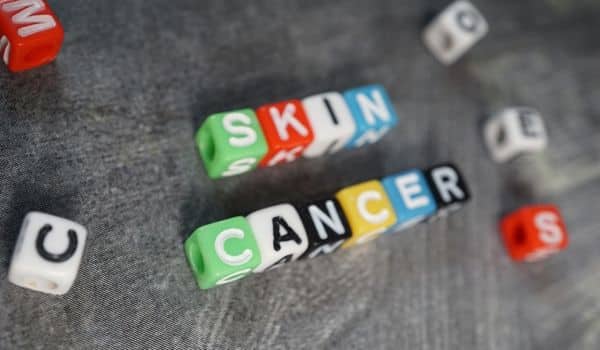
What is a skin graft for skin cancer?
- If a large portion of cancerous skin or normal skin is removed during surgery, your surgeon will repair the area using a skin graft or skin flap. A skin graft or skin flap is a skin from another part of your body (e.g. thigh or groin) that is used to reconstruct the surgical opening or the area with the missing skin. The damaged area will be covered with the skin graft and will be held in place using stitches, staples, or special glue. Within a few days, the transplanted skin will begin to develop blood vessels and its own blood supply. The transplanted skin will then connect to the skin around it.
What is the recovery time for a skin graft?
- The recovery time may vary from patient to patient. In general, the skin graft should develop blood vessels and its own blood supply after about 5 to 7 days. During this time, the skin graft should connect to the skin around it. After about 2 to 3 weeks, you should notice signs of healing at the donor site.
Is a skin graft a serious surgery?
- Skin graft surgery is considered a major surgical procedure. It involves using skin from another part of your body (e.g. thigh or groin) to reconstruct the surgical opening or the area with the missing skin. In addition, the risks and complications associated with the procedure make it a serious surgery.
Does skin grow back after graft?
- Skin graft donor site/s retains portions of the dermis, which is the inner layer of the skin. Therefore, the donor site/s can regrow new skin within 2-3 weeks. However, the graft site requires a longer time to heal. As you recover, you will need to avoid activities that can put tension on the graft site.
How painful is a skin graft?
- The procedure involves general anaesthesia. This means that you will be asleep throughout the skin grafting process and will not feel any pain. However, you may start to feel discomfort once the effects of the anaesthesia wear off. This can be managed by taking the prescribed pain medications and applying an ice compress.
What percentage of skin grafts are successful?
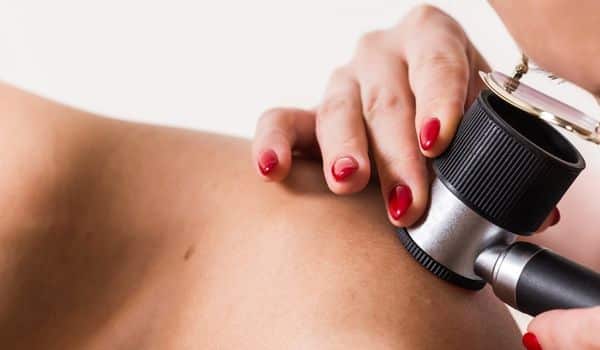
- Skin grafts have a high success rate. When performed by a highly trained and experienced surgeon, it has a success rate of 95%.
Do skin grafts ever look normal?
- At first, the colour of the grafted skin may not blend well with the surrounding skin because swelling may be present for 1-2 weeks. It may appear red or purple but it should begin to blend with the surrounding skin over time. This process can take 1-2 years.
What are the 4 types of grafts?
There are 4 types of grafts depending on the origin. They are the following:
- Autograft (autologous) graft: it involves the use of your own skin
- Allograft (heterologous) graft: it involves the use of another person’s skin
- Xenograft (heterograft): it involves the use of skin from other species (e.g. pigs)
- Synthetic skin substitutes: it involves the use of artificial skin that is manufactured in the laboratory
How many hours does a skin graft surgery take?
- The length of the surgery will depend on several factors such as the size of the body area, the type of skin graft, and the surgeon’s skills. In general, a skin graft surgery can take 1-3 hours to complete. After the procedure, you may need to stay one or more nights in the hospital.
Are you awake during a skin graft?
- This surgery is more extensive than other skin cancer procedures and is usually performed using general anaesthesia. This means that you will be asleep throughout the skin grafting process and will not feel any pain.
What happens after a skin graft?
- After a skin graft, the area may be sore for 1-2 weeks. As you recover, you will need to avoid activities that can put tension on the graft site.
How long do you stay in the hospital for a skin graft?
- For small skin grafts, you may go home 1-2 hours after the surgery. If the procedure involves large skin grafts, you will need to stay 5-10 days in the hospital.
Do skin grafts leave scars?
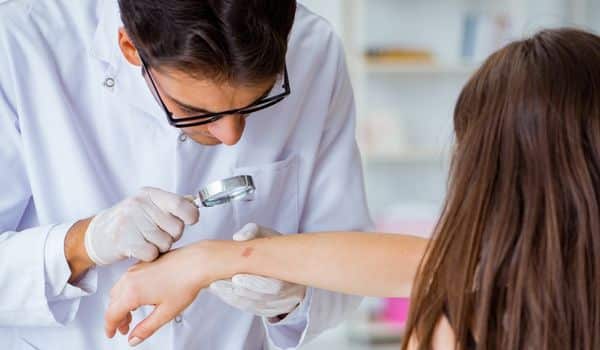
- Usually, you will have two scars: one on the area where the skin graft was taken (donor site) and another on the area where the graft has been transplanted (graft site).
How do you take care of a skin graft?
- To achieve the best clinical outcome, you should avoid activities that can put tension on the graft site. You should also avoid infection by performing regular wound care at the site.
How thick is a skin graft?
The thickness of the skin grafts varies. In general, they are classified as:
- Thin (0.013-0.033 cm)
- Medium (0.033-0.046 cm)
- Thick (0.046-0.076 cm)
How do you know if a skin graft has failed?
The following signs and symptoms are suggestive of compromised or failed skin grafts:
- Breakdown of tissue
- Continuous pain
- Darkening of the skin at the graft site
- Fever
- Numbness
- Swelling
Further Reading – Medical References about Skin Graft after Cancer
- Types of surgery for larger skin cancers
- What to know about a skin graft
- Skin Grafts – How it’s performed
- Skin Graft Procedure Overview
- Tolerance of skin grafts to postoperative radiotherapy
About Dr Mark Gittos FRACS (Plast) – New Zealand Plastic Surgeon
Practice locations in Herne Bay Auckland, Northland and Bay of Plenty – Kerikeri, Whangarei, New Plymouth & Tauranga
Dr Mark Gittos is a leading Specialist Plastic Surgeon and operates a practice in Herne Bay, Auckland and in the UK. The practice focuses on both surgical and non-surgical procedures, each designed to help restore, improve or change a physical characteristic or problem. The first step in every case is to talk through your personal requirements and explore all the options, before deciding on the most effective solution.
Dr Mark Gittos offers high quality, natural-looking cosmetic surgery results and is highly experienced in Breast, Body and Face Surgery having performed over 4000 Surgeries in the last 26 years. With worldwide expertise Dr Gittos is an expert in breast, face and body surgery for men & women.
Naturally, before any treatment is begun, we will explain clearly the advantages and risk factors; so that you have the information you need to make an informed decision that is best for you. Visit the practice to find out more.

NEXT STEPS
Please NOTE: Dr Gittos only performs surgery on non-smoker patients with a BMI less than 30. To check your BMI please visit the NZ Heart Foundation website. For help giving up smoking before surgery visit the Smoke Free website
Do your Research
- Read the Website and Blogs relevant to your procedure
- Browse our Frequently Asked Questions including how to choose a Surgeon for your procedure
- Download and read the FREE Guides to Surgery
What to Bring to your Plastic Surgeon Consultation
- Bring a friend or relative to help discuss the information and your choices
- Take lots of notes and read the documents provided thoroughly
- Dress in simple clothes as you may need to undress for examination
- Bring your medical referral and any relevant medical documents or test results
Book your Initial Surgery Consultation
- A Referral from your GP or specialist is helpful but NOT essential – you can have a consultation without a GP Referral
- Email us or Call on 09 529 5352 to arrange your surgeon consultation appointment.
- Book a consultation with Dr Gittos by paying the Consultation Fee – $325 incl GST
Traveling for Surgery? – Consider post-surgery luxury recovery in a Hotel with LuxeCare
Please contact us to arrange to book a consultation with our Specialist Plastic Surgeon or to speak with our Patient Care Advisor.
Send an enquiry form today or phone 09 529 5352 during Clinic Hours
